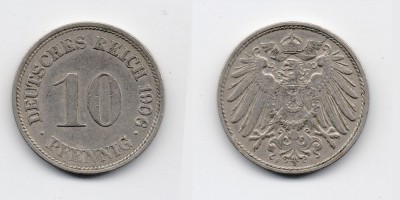Coin is a kind of metal miniatures, which carry information about their country. Usually, on coins of the mint symbols of their country, historical figures or fragments of the associated fauna and flora, which in every country is unique and different.
Coinage is one of the main components of the monetary system of any state. Coinage in 1906 was actively developing in different countries:
- France;
- US;
- Brazil;
- Romania;
- Germany;
- Russia.
France coin 10 centimes were minted from a variety of alloys. It could be coins copper-Nickel with a diameter of 22 millimetres, or bronze with a diameter of 30 millimeters.
In 1906, new to the U.S. mint began issue 1 dime (10 cents). The coin was composed of 90 % silver and 10% copper. The term dime to mean "tithing", which is why the coin was given such a name.
Brazil has issued into circulation a coin 1000 Reis. She, like us, consisted mainly of silver. Equal to 1/1000 of milreis, this unit of account is very small.
1906 for monetary system in Romania, marked by the release of these coins:
- 10 Bunny;
- 1 bans;
- 5 Bunny.
Germany introduced the 2 and 5 marks, Bulgaria – 10 stotinki.
The Russian Empire has allocated production of a 2-and 15-kopeck coins was also released on 10-ruble coin. The special value of it is that, according to historical official documents, this coin is issued in the amount of 10 pieces.
Russia issued gold coins of 5 and 10 rubles, silver coins - 1 ruble, 50 kopeks, 20, 15, 10 and 5 kopeks, copper – 3, 2 and 1 kopeck, and coins in Finland. It was the values: 2 mark, 25, 5 and 1 penny.
 Russian
Russian English
English Deutsch
Deutsch Spanish
Spanish Português
Português













